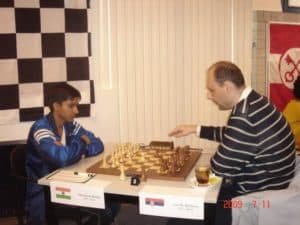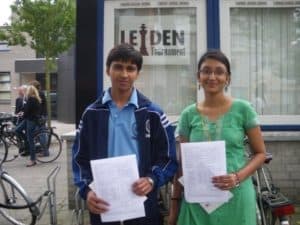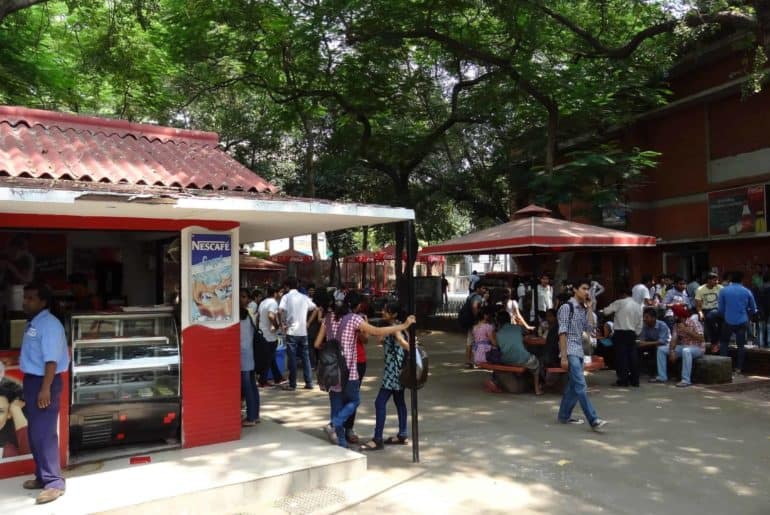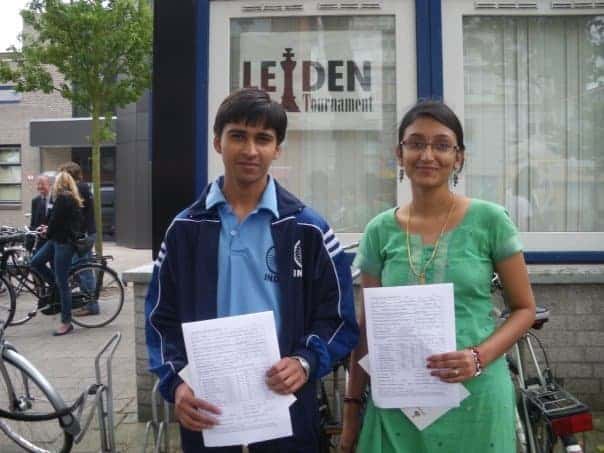
“All I want to do ever, is to play chess.” Bobby Fischer said it, and these kids seem to happily reiterate it. (For the uninitiated, Bobby Fischer was a former World Chess Champion).
These wunderkinds started playing the game at the incredulous age of seven and eight, an age when all that we could strain our brain cells for would have probably been the discovery of a new hideout for hide-and-seek or an attempt to tie the shoe-laces!
Shreyansh Daklia, a student of SRCC, in his third year of B.Com (Hons), can easily pass by as the most unassuming lad on campus, but just get that checkerboard out and he’ll amaze you with some of those lethal moves he keeps, neatly tucked under his belt. Shreyansh holds an international rating of 2216 (in chess, the higher it gets, the better it is ), and has 3 International Master norms to his credit, a title given to chess players. Also, he has received prestigious awards and scholarships like the Shaheed Koushal Award from Chhattisgarh Govt. in 2010, and scholarships from the Airport Authority of India.
Here I am in a conversation with him:
Q. When and how did you start?
A. I started when I was 7. My dad happened to visit a stadium the other day, and he saw small kids getting prizes, came home and told us, “Tum logon ko bhi aise hi prize jeetna hai.” We went on to attend a summer coaching, then participated in the district tournament (under 7). Once I became a State Under-7 Champion, there was no looking back.
Q. Has chess helped you evolve your mental faculties in any way?
A. It surely has, to a great extent. Chess has helped in improving my concentration, patience and logical reasoning.
Q. Who do you think are better at chess, boys or girls?
A. Statistically, boys are better, personally also, I think they are better. After all, fighting is in their genes. (laughs)
Q. What are your future plans for chess?
A. I’m confused between preparing for MBA, looking for placements. I’ll think I’ll complete my MBA, and then continue with Chess.

He’s not making these moves alone. We also have Kanika Saxena, another student of SRCC, in her second year of Economic (Hons). You’ll find her wheeling around the campus with the most endearing smile etched on her face but engage her in a game, and she’ll bare the most devilish grin as she knocks down your pawns and rooks. Kanika has an international rating of 1600, has participated in the Asian and Commowealth Games for chess and is the founder of the girls’ chess team in college.
This is what she had to say:
Q. How did you start with chess?
A. When I was in class 2, I used to watch my grandfather play. That s how I got intrigued by the game, pursued it at school level and started training under one of Delhi’s best chess coaches, V.S Negi.
Q. What role has chess played in your life?
A. It has certainly made me more cautious about things, makes you a bit calculative. I had to discontinue playing after class 10, due to studies and personal reasons, but Chess still holds a dear place in my life, and I hope I’m able to come back to it once I’m settled.
Vatsala Gaur
[email protected]



 Exam results are generally not what most students look forward to. So when Delhi University decides to go ahead and make the experience even more harrowing, you can’t really blame them for being disgruntled.
Exam results are generally not what most students look forward to. So when Delhi University decides to go ahead and make the experience even more harrowing, you can’t really blame them for being disgruntled.








 The members meet every day and practice climbing at the Eshwaran Bharatan Memorial wall, an artificial rock climbing wall situated outside the college gymnasium. The annual St Stephen’s open short climbing competition also takes place here. The wall has been named after Eshwaran Bharata, president of the club in 1979-80, who was killed in an expedition in Lahaul.
The members meet every day and practice climbing at the Eshwaran Bharatan Memorial wall, an artificial rock climbing wall situated outside the college gymnasium. The annual St Stephen’s open short climbing competition also takes place here. The wall has been named after Eshwaran Bharata, president of the club in 1979-80, who was killed in an expedition in Lahaul. what season in favorable. We organize a long trek in the summer break and shorter treks in October, March and September, depending upon holidays. Then come sponsorships. A 10 day trek will have a budget of around 1 Lakh. So there is a lot to look into.” says Lucky, captain of the club.
what season in favorable. We organize a long trek in the summer break and shorter treks in October, March and September, depending upon holidays. Then come sponsorships. A 10 day trek will have a budget of around 1 Lakh. So there is a lot to look into.” says Lucky, captain of the club.